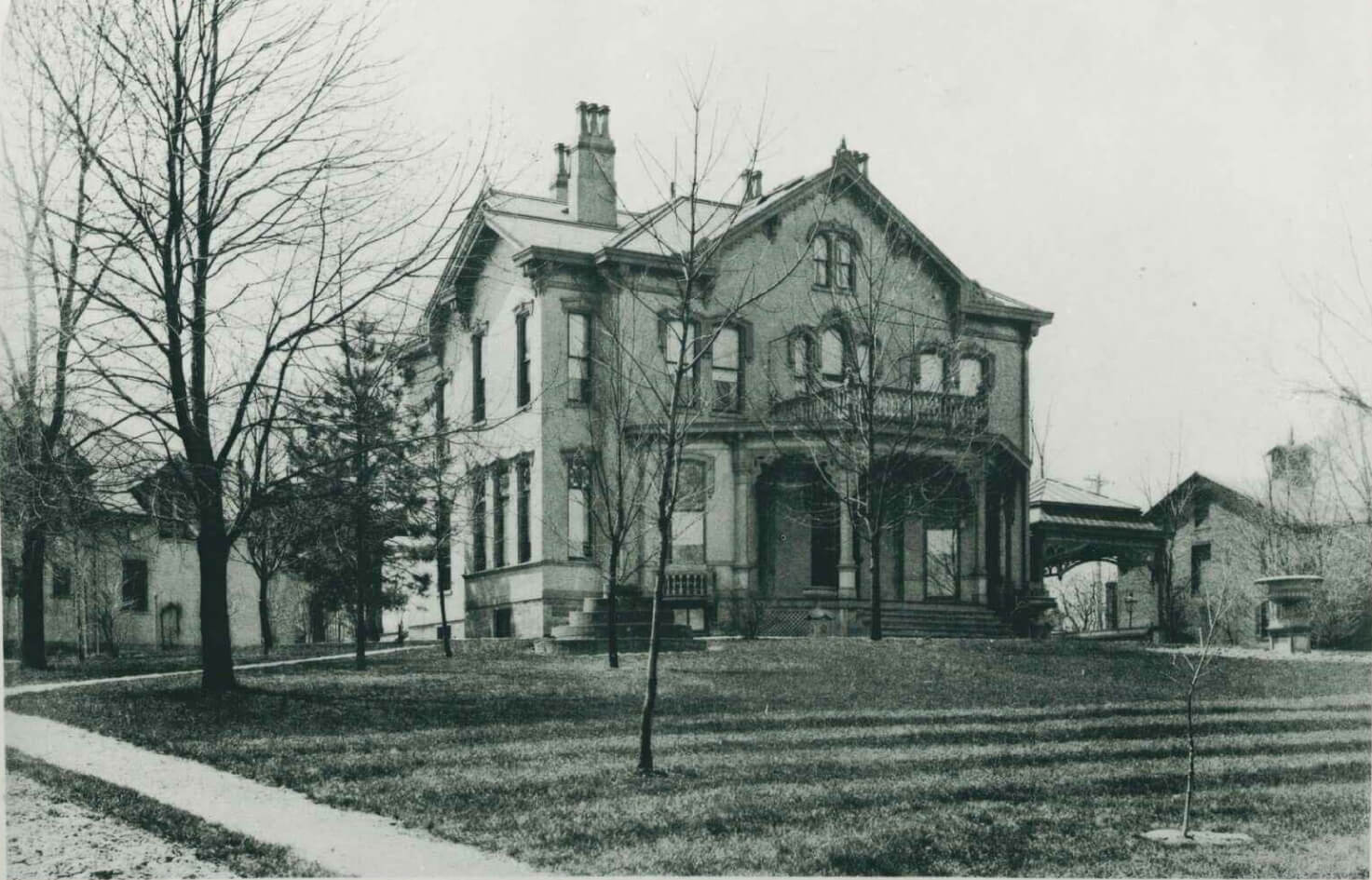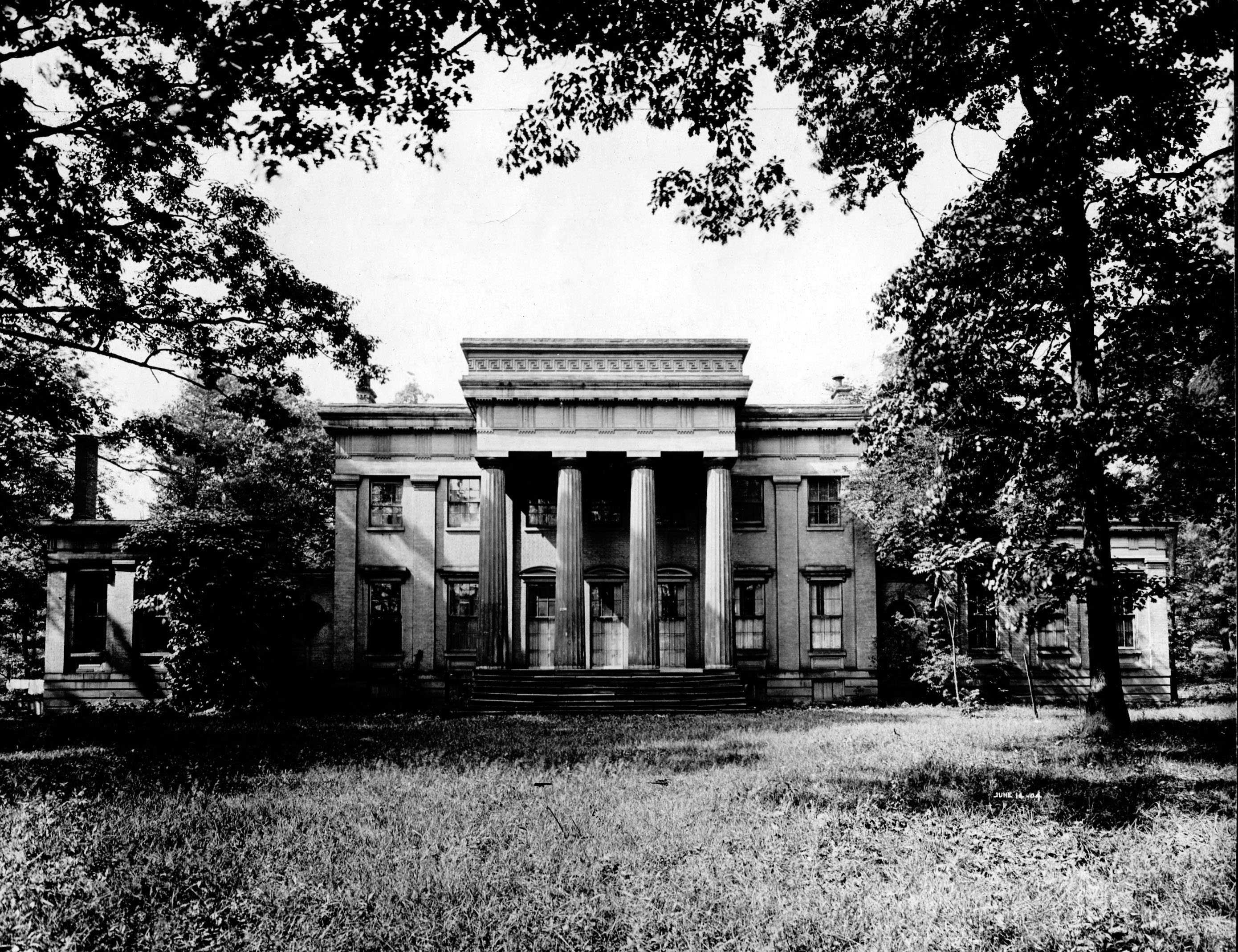What did the Frick look like in 1882? Our Landscape App can show you!
The Frick Pittsburgh as you see it today does not actually reflect the boundaries of the property that the Fricks owned. The estate, like the house itself, was a reflection of the lives and interests of the family as they changed over time.
The Fricks initially purchased a home known as Homewood in 1882 on a 1.43-acre parcel of land. Homewood looked different from Clayton, but forms its core as it is today. The home was remodeled to its current size and general appearance by architect Frederick J. Osterling in 1891.

Visitors are often surprised to learn that there were neighbors very near the Fricks. To the east of Clayton on Penn Avenue were the Gillespies and the Peacocks, to the south were the Borntraegers—whose Victorian mansion was built about the same time as Clayton and was situated between our current administration building (Haller House) and Clayton until it was torn down in 1984.
Before the neighborhood around the Frick was known as Point Breeze, it was a wooded undeveloped area a considerable distance by carriage from the city. In 1835 Judge William Wilkins bought 650 acres of land in the area. Wilkins was a lawyer and politician of national renown who served in President Tyler’s administration. His property was bounded on the west by Dallas Avenue, on the north by Penn Avenue, on the east by Braddock Avenue, and on the south by Forbes Avenue.
After clearing the heavy woods from a section on Penn Avenue—roughly opposite Murtland Street—Wilkins built his self-designed mansion, Homewood (NOT the Homewood the Fricks would eventually purchase), the centerpiece of his vast estate and outbuildings. The house faced Penn Avenue and was a neighborhood landmark until it was razed in the early 1920s.

While the vast estate of Homewood is gone, Judge Wilkins left his mark on the area, where streets and neighborhoods bear his name or that of his estate, including Wilkins Avenue, Wilkinsburg, Homewood Avenue, Homewood Cemetery, and the neighborhood of Homewood.
From home, you can learn more about the changing boundaries of the Frick Estate, the neighborhood of Point Breeze, and the history of The Frick Pittsburgh's campus on our landscape app.
When our grounds reopen, use the app to see historic map and photo overlays of what you see, hear audio or read text descriptions of the history of buildings and spaces on campus, and identify the myriad species of trees you encounter (did you know we're an arboretum?).


The Fricks initially purchased a home known as Homewood in 1882 on a 1.43-acre parcel of land. Homewood looked different from Clayton, but forms its core as it is today. The home was remodeled to its current size and general appearance by architect Frederick J. Osterling in 1891.
Clayton, then known as Homewood, c. 1883. Courtesy of The Frick Collection/Frick Art Reference Library Archives.
As opportunities became available to add to their property, the Fricks tended to do so, eventually owning nearly 500 acres encompassing part of what is known today as Frick Park by 1904. Once the Fricks’ main residence was established in New York City in 1905, the family spent less time in Pittsburgh and began to gradually sell parcels of land, reducing the size of the vast estate they had acquired over the years.Visitors are often surprised to learn that there were neighbors very near the Fricks. To the east of Clayton on Penn Avenue were the Gillespies and the Peacocks, to the south were the Borntraegers—whose Victorian mansion was built about the same time as Clayton and was situated between our current administration building (Haller House) and Clayton until it was torn down in 1984.
Before the neighborhood around the Frick was known as Point Breeze, it was a wooded undeveloped area a considerable distance by carriage from the city. In 1835 Judge William Wilkins bought 650 acres of land in the area. Wilkins was a lawyer and politician of national renown who served in President Tyler’s administration. His property was bounded on the west by Dallas Avenue, on the north by Penn Avenue, on the east by Braddock Avenue, and on the south by Forbes Avenue.
After clearing the heavy woods from a section on Penn Avenue—roughly opposite Murtland Street—Wilkins built his self-designed mansion, Homewood (NOT the Homewood the Fricks would eventually purchase), the centerpiece of his vast estate and outbuildings. The house faced Penn Avenue and was a neighborhood landmark until it was razed in the early 1920s.
Homewood, the residence of William Wilkins, c. 1920. Courtesy of the Carnegie Library of Pittsburgh.
Homewood became known as the heart of Pittsburgh culture and entertaining from the 1830s through Judge Wilkins’ death in 1865. Judge Wilkins’s prominence helped attract attention to the eastern suburbs of Pittsburgh, and, in the prosperous 1860s, development in the area greatly increased, especially after the construction of two nearby rail stations made commuting to the city a much simpler proposition. The boom in growth continued after Wilkins death in 1865, spurred on by the sale of lots parceled out from his estate.While the vast estate of Homewood is gone, Judge Wilkins left his mark on the area, where streets and neighborhoods bear his name or that of his estate, including Wilkins Avenue, Wilkinsburg, Homewood Avenue, Homewood Cemetery, and the neighborhood of Homewood.
From home, you can learn more about the changing boundaries of the Frick Estate, the neighborhood of Point Breeze, and the history of The Frick Pittsburgh's campus on our landscape app.
When our grounds reopen, use the app to see historic map and photo overlays of what you see, hear audio or read text descriptions of the history of buildings and spaces on campus, and identify the myriad species of trees you encounter (did you know we're an arboretum?).




